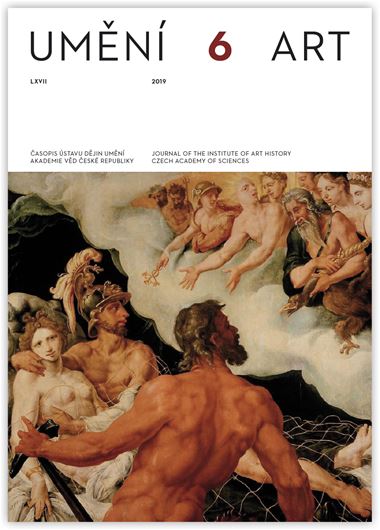Vilém Urban
Czechoslovak Polystyrene Furniture and Its Connection to the Futurology of the Home
International furniture design was strongly influenced in the 1960s by the arrival of plastic materials in the furniture industry and humans’ entry into outer space. These two key factors shaped the emerging new language of post-war international design. New styles of expression were linked to new theoretical and philosophical directions developing in the fields of architecture, urban design, and the domestic living space, fascinated not just by flights into space but also by the speed with which visions of the future were becoming an everyday reality. The Republic of Czechoslovakia, as the westernmost country in the Eastern Bloc, occupied a unique geopolitical position in the post-war bipolar world order: bound on the one hand by Soviet control, but on the other hand geographically close to Western countries such as Italy and Austria, where progressive design was being advanced. This contradictory position was one of the circumstances that in some way determined the nature of domestic furniture production. In the early 1970s the Czechoslovak furniture industry began adapting itself to the use of chemical products (‘chemicalisation’) with the state-planned development of polystyrene furniture. The normalisation era, when President Ludvík Svoboda was in power (from 1968 to 1975), thus represents a major turning point in the evolu- tion of Czechoslovak furniture production in terms of its repertoire of materials and the rise of a new style of expression. In 1972, in the frame of a task they were assigned by the state, employees of the Brno-based Vývoj nábytkářského průmyslu (the Institute for Development in the Furniture Industry), František Vrána (1934–2014), Miroslav Navrátil (1913–1999), and František Mezuláník (1930–2011), introduced a series of seating models made out of polystyrene, which were not just an illustration of how domestic production oscillated between the mass export production of furniture and attempts to mirror progressive trends in the West, but were also to some degree a reflection of contemporary trends in the theory of domestic space, progressive architectural visions, and the popular culture of the time.
Vilém Urban: vilem.urban01@upol.cz
Full-text in the Digital Library of the Czech Academy of Sciences:
https://kramerius.lib.cas.cz/uuid/uuid:89c91bd5-9509-428f-b9d0-9da0a12a072f
< back

